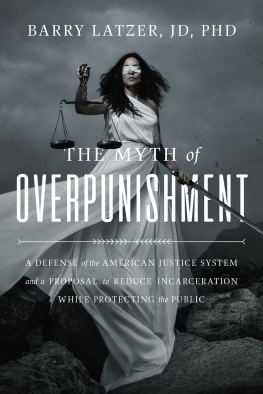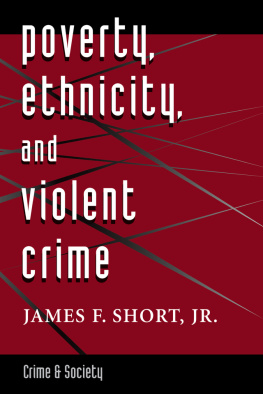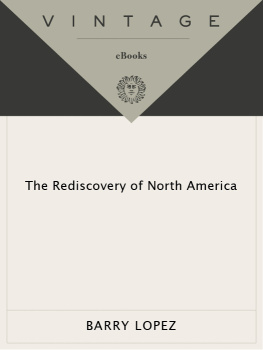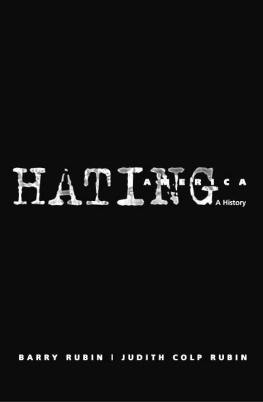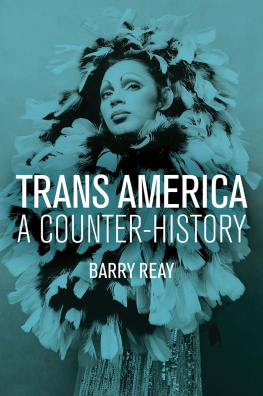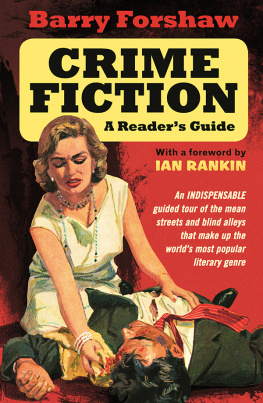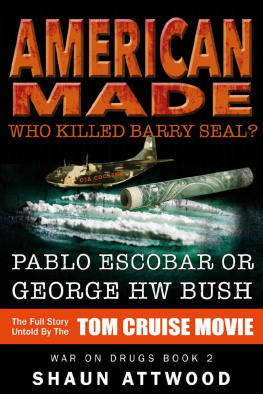Published by Louisiana State University Press
www.lsupress.org
Copyright 2020 by Louisiana State University Press
All rights reserved. Except in the case of brief quotations used in articles or reviews, no part of this publication may be reproduced or transmitted in any format or by any means without written permission of Louisiana State University Press.
Designer: Barbara Neely Bourgoyne
Typeface: Whitman
Library of Congress Cataloging-in-Publication Data
Names: Latzer, Barry, 1945 author.
Title: The roots of violent crime in America : from the gilded age through the great depression / Barry Latzer.
Description: Baton Rouge : Louisiana State University Press, 2021. | Includes bibliographical references and index.
Identifiers: LCCN 2020019317 (print) | LCCN 2020019318 (ebook) | ISBN 978-0-8071-7429-6 (cloth) | ISBN 978-0-8071-7483-8 (pdf) | ISBN 978-0-8071-7484-5 (epub)
Subjects: LCSH: Violent crimesUnited StatesHistory. | CrimeUnited States.
Classification: LCC HV6789 .L386 2021 (print) | LCC HV6789 (ebook) | DDC 364.150973/09034dc23
LC record available at https://lccn.loc.gov/2020019317
LC ebook record available at https://lccn.loc.gov/2020019318
For Eli Faber, of blessed memory, dear friend, excellent scholar, wonderful colleague
PREFACE
For much of my adult life, during the late twentieth century, the United States was besieged by extraordinary levels of violent crime. From 1960 to 1990, violent crime rates per 100,000 people (the standard measure) rose a shocking 353 percent. Partly as a result of the nations preoccupation with the threat to personal security, the study of crime came into its own as an academic discipline, and I became a professor at John Jay College of Criminal Justice in New York City.
Most of my colleagues were convinced that the crime wave (more tsunami than wave) was a product of adverse social conditionsmeaning poverty, residential segregation in socially isolated large-scale communities, female-headed households, and high unemployment ratesa theory sometimes called structural analysis. Since socioeconomic conditions were improving when the crime rise began in the late 1960s, this explanation seemed questionable. When I learned that at earlier points in history, such as the early 1890s and the late 1930s, crime rates were fairly low or were declining despite sharp economic downturns, I became even more skeptical. My skepticism was reinforced by the crime drop during the great recession of 20078. How could it be that worse conditions produce less crime?
This motivated me to mount a major study of violent crime over the course of American history, from the nineteenth century to the early twenty-first. I sought to explore the correlation between social and economic conditions in the United States and violent crime levels. What, I asked, was the relationship, if any, between these phenomena? My work on the postWorld War II period, The Rise and Fall of Violent Crime in America, was published in 2016. The volume now in your hands asks the same question for the period prior to 1940.
This book focuses on violent crime in roughly chronological order, from about 1880 to 1940. However, in chapter 1, which discusses white southern violence, I look back to the immigration patterns of the seventeenth and eighteenth centuries, which have, surprisingly, influenced crime in this country ever since. In addition, I sometimes broke with strict chronology so that I could group some chapters together thematically. An example is the discussion of crime in the nineteenth-century West, chapter 5, which comes after four chapters on southern crime extending into the early twentieth century.
Once I realized that violent crime did not correlate perfectly with socioeconomic disadvantage, I sought explanations for this unexpected finding. What I found, unsurpringly, is that multiple factors were significant in the rise and fall of violent crime, including the size of the young male population, from which the bulk of violent offenders are drawn; the role of gangs made up of these young males; the immigration and migration of certain groups to or within the United States; the effectiveness of the criminal justice system in apprehending and punishing offenders; the availability of firearms; the use of narcotic drugs, and so on. These factors were pretty much as expected, although the way they play out in American history is in itself interesting.
More surprising and contentious is my finding that the cultural support for violence among social groups (ethnic, religious, racial, and regional groups, the latter exemplified by white southerners), played a major role in the history of crime. According to this cultural theory of crime, some disadvantaged groups commit much more violent crime than other groups, despite comparable, or even lesser, deprivation.
Not only does this cultural factor explain the variance in violent crime rates among similarly disadvantaged groups, it also partly explains why economic conditionsin a particular city, a region, or an entire nationdo not accurately predict violent crime rates. Rather, the level of violent crime depends on the cultural support for violence among the inhabitants. There is a second reason as well for the lack of correlation between violence and the economy: violent crime is usually motivated by anger due to insults, quarrels, grudges, and the like, not by money. Consequently, violent crime does not align with economic conditions, which is why economic depressions do not invariably cause violent crime upturns.
The 1890sdiscussed in detail in Part III of this bookoffers a notable example of this phenomenon. During that decade, when the biggest cities in the United States were reeling with massive numbers of impoverished people, many of them recent immigrants, violent crime rates were much lower than they would be one hundred years later when the proportion of the population living in poverty was much smaller. Crime historian Roger Lane once reported that robbery at gunpoint was so rare in the urban East that a Bronx saloon holdup in 1895 made headlines in Philadelphia and the story ran for a week! In 1990, by contrast, an armed robbery in the Bronx wouldnt even have produced an article, much less a headline, in New York City newspapers. If there were greater levels of urban poverty in the nineteenth century why was stranger violencethe bane of the late twentieth centuryso uncommon? Why didnt big-city residents of the 1890s rob their neighbors or kill total strangers at anywhere near the levels for these crimes one century later?
Moreover, prior to the last decades of the nineteenth century and the development of a sizable middle class, elites engaged in violent crime, duels among gentlemen providing an especially vivid example. Starting in the twentieth century, however, elite violence diminished radically as the middle class came to realize that its benefits were far outweighed by numerous risks, including personal injury, loss of status, and criminal justice sanctions. Plus, the civil legal system provided effective alternatives for dispute resolution. In other words, contrary to prevailing contemporary beliefs as well as to the structural theory of crime, history presents striking examples of violent crime without poverty and profound poverty without violent crime.
This is not to say that structural explanations are completely wrong. In the twentieth and twenty-first centuries it is clear that crime (save for fraud and other white collar offenses) is overwhelmingly a poor mans game. So there is, as structural analysis posits, a high correlation between poverty and crime. But is this because the poor are induced by poverty to resort to criminality, or is it that the more affluent have, for self-interested reasons, abandoned the field to the less well-off? The late nineteenth-century situation, as we shall see, and the significance of nonfinancial motivations for violent crime, such as disputes or long-standing quarrels, suggest that the latter is the better explanation. If so, then it isnt that socioeconomic adversities cause violent crime, but rather that affluence inhibits it.


